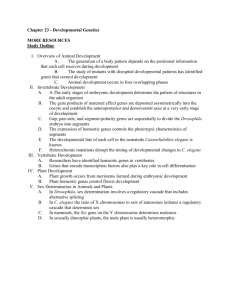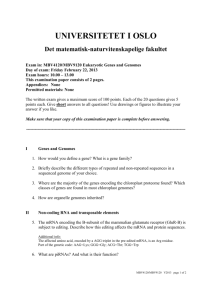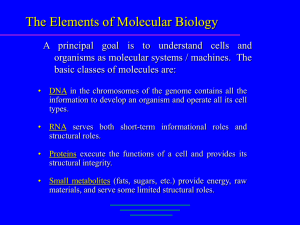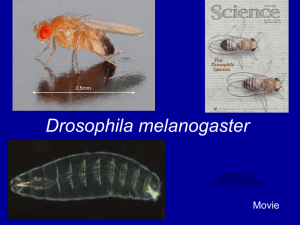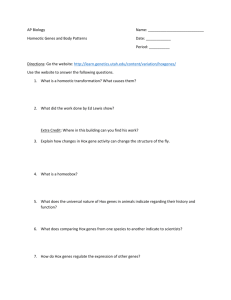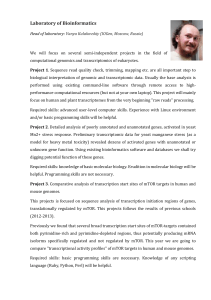UNIVERSITETET I OSLO Det matematisk
advertisement
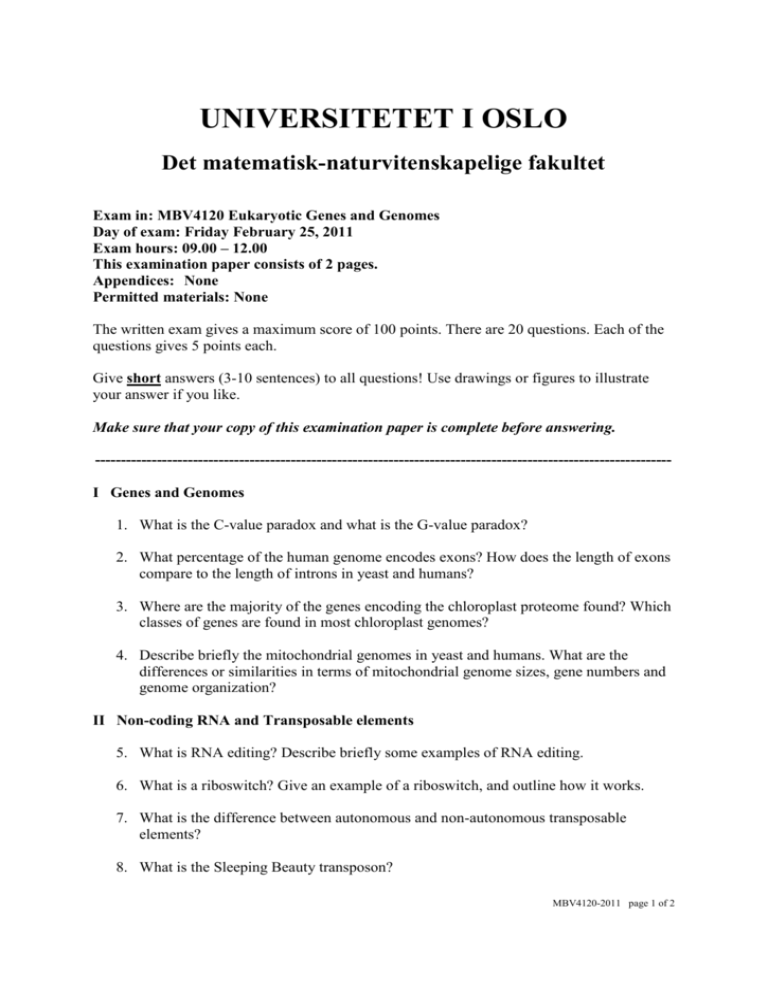
UNIVERSITETET I OSLO Det matematisk-naturvitenskapelige fakultet Exam in: MBV4120 Eukaryotic Genes and Genomes Day of exam: Friday February 25, 2011 Exam hours: 09.00 – 12.00 This examination paper consists of 2 pages. Appendices: None Permitted materials: None The written exam gives a maximum score of 100 points. There are 20 questions. Each of the questions gives 5 points each. Give short answers (3-10 sentences) to all questions! Use drawings or figures to illustrate your answer if you like. Make sure that your copy of this examination paper is complete before answering. ---------------------------------------------------------------------------------------------------------------I Genes and Genomes 1. What is the C-value paradox and what is the G-value paradox? 2. What percentage of the human genome encodes exons? How does the length of exons compare to the length of introns in yeast and humans? 3. Where are the majority of the genes encoding the chloroplast proteome found? Which classes of genes are found in most chloroplast genomes? 4. Describe briefly the mitochondrial genomes in yeast and humans. What are the differences or similarities in terms of mitochondrial genome sizes, gene numbers and genome organization? II Non-coding RNA and Transposable elements 5. What is RNA editing? Describe briefly some examples of RNA editing. 6. What is a riboswitch? Give an example of a riboswitch, and outline how it works. 7. What is the difference between autonomous and non-autonomous transposable elements? 8. What is the Sleeping Beauty transposon? MBV4120-2011 page 1 of 2 III Chromosomes and Epigenetics 9. Describe the different levels of DNA condensation (packing) in chromatin. 10. What are polytene chromosomes? How can these be useful for research purposes? 11. Briefly describe how modifications of the histone tails may affect chromatin structure and gene expression. 12. What is dosage compensation? IV Genetic methodology and model organisms 13. In the mating type switch in Yeast, transposition of HML or HMR to the MAT locus is explained by a synthesis-dependent strand-annealing model (SDSA). Explain briefly how transposition occurs. How is it assured that the transposition of HML or HMR to MAT is unidirectional? 14. What is forward genetics and reverse genetics? Which genetic tools (methods) can be utilized in these strategies? 15. Which factors can affect the transcription of transfected or transformed DNA? By which methods for genetic modification can such effects be largely avoided? 16. Briefly describe three technologies that allows for direct targeting of a gene. Explain if these technologies can be used to knock-out or knock-down several members of a gene family. V Developmental biology 17. What is a syncytium? Explain the benefits of it for the developing Drosophila embryo. 18. How are the homeotic genes organized in Drosophila and what is their role during development? How are the homeotic genes in Drosophila regulated? 19. Give an example of imprinting in Arabidopsis and outline the major epigenetic mechanisms involved. 20. How does DNA hypermethylation of the SUPERMAN locus affect floral organ development as explained by the ABC model? What happens if additionally the HMTase KRYPTONITE is mutated? MBV4120-2011 page 2 of 2


